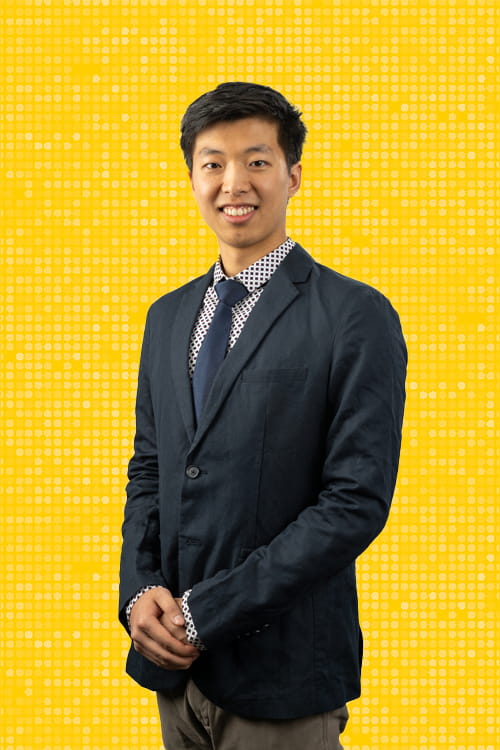
William Dong, Undergraduate student, biomedical engineering
Determines medical imaging safety
“He has presented research at international, national, and local conferences and is currently writing a first authored manuscript for submission to a peer reviewed journal. With one abstract already published, this is a high achievement for an undergraduate student.” – Kanchna Ramchandran, associate research scientist
Hometown: Inverness, Illinois
Faculty mentor/advisor: Kanchna Ramchandran, PhD, associate research scientist, internal medicine, Carver College of Medicine
What is your degree program and anticipated graduation date? Bachelor of Science in Engineering in biomedical engineering, spring 2024
Please describe your research: In an ultra-high resolution magnetic resonance imaging (MRI) scanner, metallic objects can be unsafe (due to magnetic force interactions and heating effects) and can cause artifact effects (image misrepresentation/distortions). One of my research projects focused on testing the safety and artifact effects of a metallic biopsy clip (body implant) in an MRI scanner. I collaborated with the staff at the Magnetic Resonance Research Facility and members of Dr. Raghavan’s lab to perform standardized tests that indicate if the clip is safe and determine the size of the artifact effect.
I am also currently getting started with a new image processing project to detect chemotherapy-related brain damage using an MRI technique, diffusion tensor imaging.
In simple terms, why does this research matter? The biopsy clip research project could help MRI technicians decide if individuals with the tested metallic biopsy clip are eligible to be scanned in an ultra-high resolution MRI scanner. Previously, interested research participants with this clip were turned away due to safety and artifact concerns. This project potentially allows more individuals to participate in research studies requiring the use of the ultra-high resolution MRI scanner. The image processing project has implications to be used with other MRI techniques to locate and further validate regions of brain damage.
How soon after starting at the University of Iowa were you able to participate in research? Two months after starting at this university. The biopsy clip research project started a year after I first participated in research.
How has being involved in research made you more successful at the University of Iowa? My research experience allowed me to apply the skills I learned in class to real-life projects, which further solidified my understanding of class concepts. It has also provided me with good networking opportunities at research conferences and during collaborations on research projects. Additionally, research experience is helpful during application to graduate schools.
What are your career goals and/or plans after graduation? After graduation, I wish to pursue a PhD program in biomedical engineering, so that I can do research as a professor. In the future, I wish to explore and contribute to the applications of machine learning in the field of biomedical engineering.
Banner location: Downtown—
